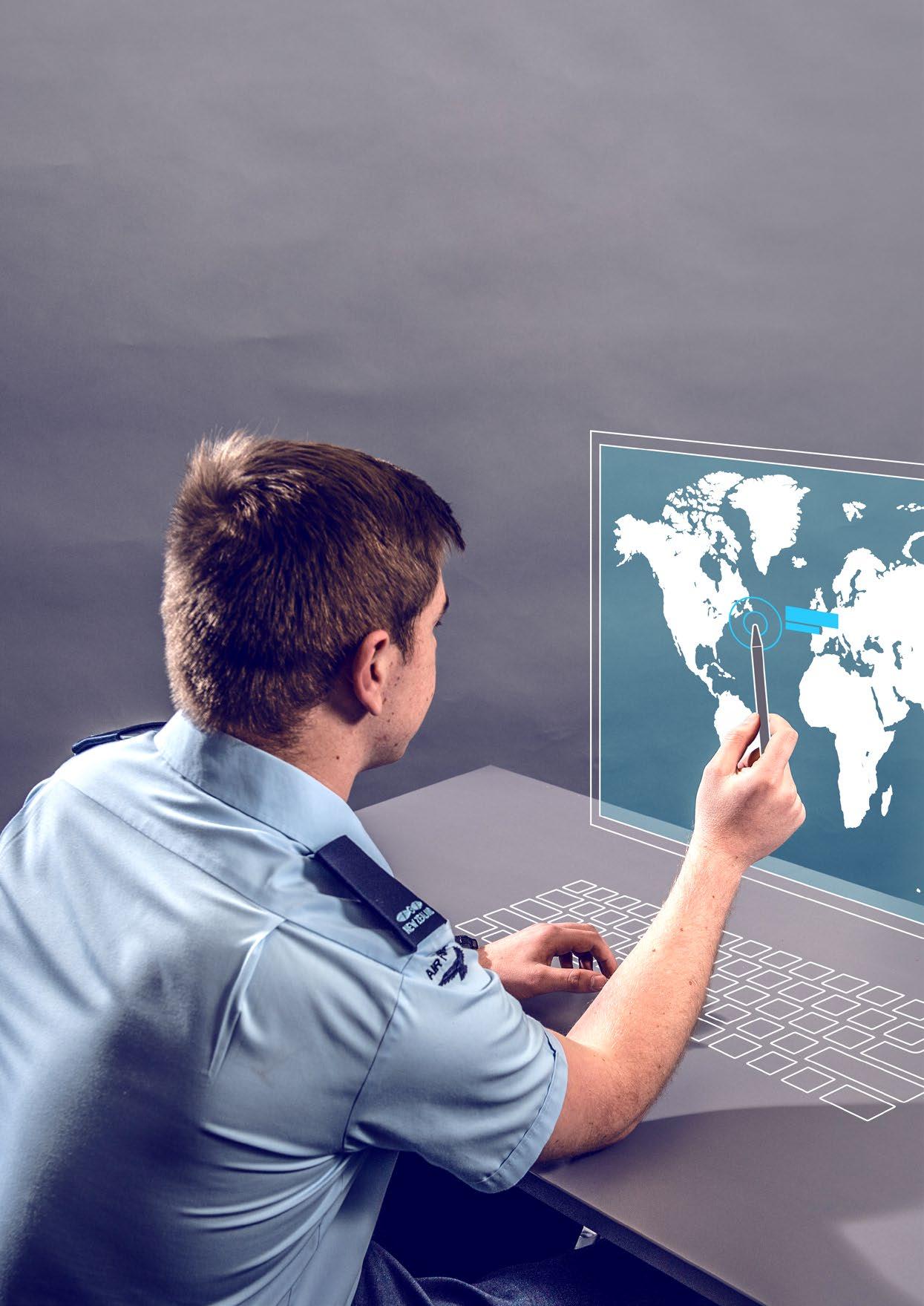
3 minute read
EYES IN THE SKIES
The future battle space will move from the front lines in the field to behind high tech computer screens and the Intelligence trade will need to keep up with the changing landscape, intelligence specialist Leading Aircraftman Jack* says.
“The future of the conventional battle space will see intelligence being relied upon even more heavily by commanders at all levels. Not just for offensive manoeuvres, but for defensive posturing as well.”
Advertisement
Between unmanned aerial vehicles, full motion video, cyber, and space, the concept of non-kinetic warfare and non-tangible effects will be dominating the battlefield, he said.
“Why would adversaries spend money on drone strikes, when they could cripple the internet and hold state governments to ransom? Why would they spend money trying to hide their assets when they could potentially jam allied satellites and limit the coverage of imagery to the allied nations?”
The future threats could mean the evolution of a separate specialisation, outside of the electronic warfare, geospatial imagery analyst and intelligence trades, which could be created to help support, forewarn, and protect New Zealand and its allies, the specialist said.
“If we continue to grow as a trade, both in knowledge and in personnel, the possibilities are pretty near endless for where we could end up.”
One of the biggest challenges looking to test the intelligence community is the over-saturation of misinformation as modern technology enables everyone to be a source of information.
“Intelligence is merely processed information, but when 90% of the information you’re getting isn’t worth the paper it’s written on, how can you accurately turn it into intelligence?”
As satellite technology improves in the future, it will have a direct impact on the geospatial analysis used by the intelligence teams, he said. “Imagery is our bread and butter and it’s pretty much guaranteed to advance with more detailed imagery. That means our analysis will be a lot more in-depth as we get that higher capability.
“Up-to-date information will make a real difference during humanitarian aid and disaster relief missions because if we can get satellite imagery immediately before and after a cyclone, for example, we can see instantly where the damage has happened and we wouldn’t need to wait for the maritime surveillance aircraft to return from a surveillance flight with the footage.”
Twenty years ago air intelligence didn’t exist as a trade in the Air Force, he said.
“To think how far we’ve come from just being No. 5 Squadron mission support to where we are today, it’s a massive leap we’ve already taken. Ten years ago, No. 3 Squadron and No. 40 Squadron didn’t have any intelligence support and now we’ve got dedicated teams embedded as well as No. 230 Squadron being the ‘hub’ for Air Force Mission Support.
“In less than 10 years, we have defined our own scope for the trade, deployed as specialists and created squadron-specific intelligence teams to deliver specific and key support to commanders across the Air Force,” the analyst said.
“We have amazing, smart people in our trade. We have come so far in the past ten years and I believe the people we have in place now will help with equally big advances in the next decade.”
*not fully identified for security reasons










